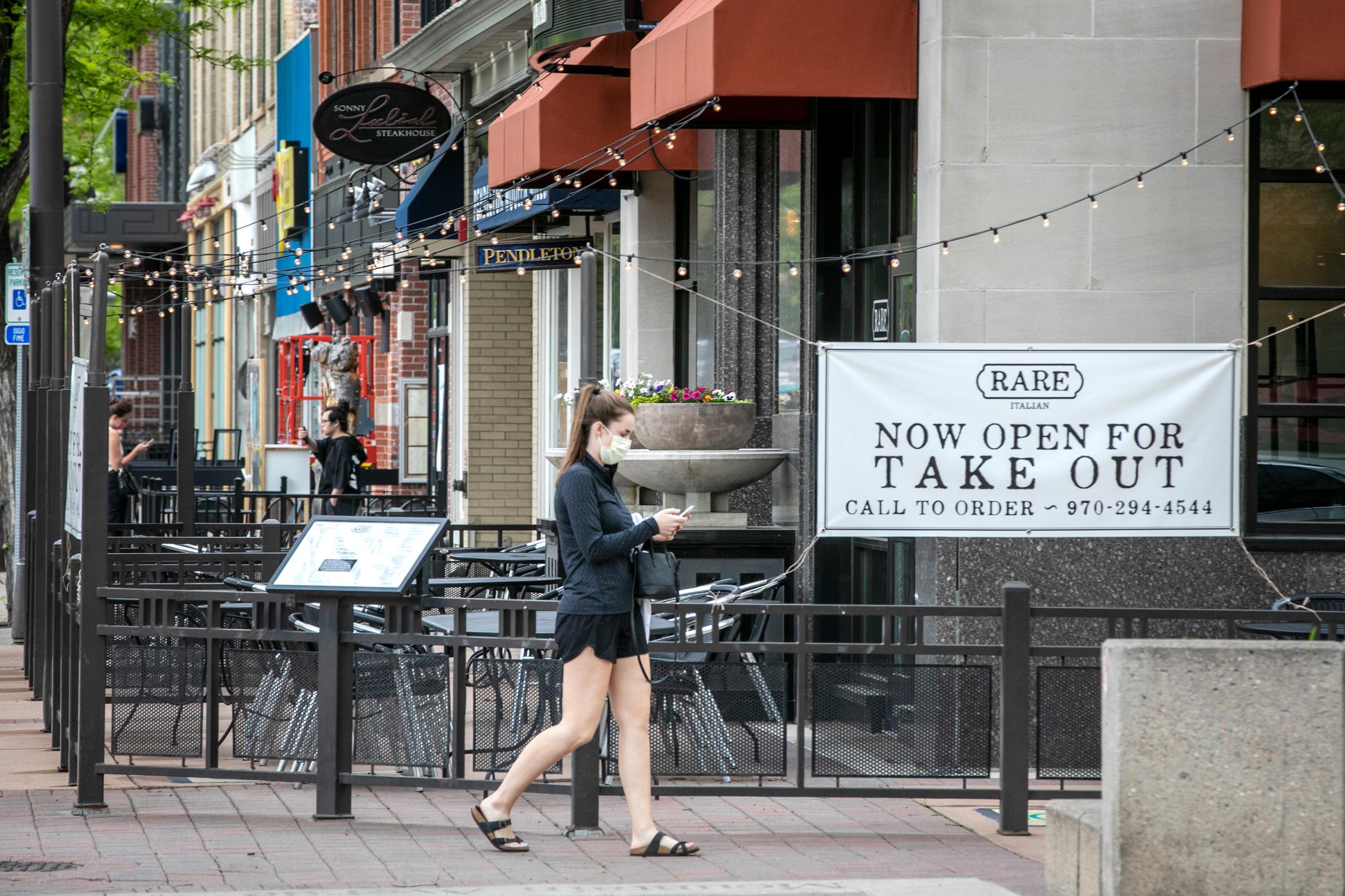
There are early signs that the recession won’t hurt Colorado’s government finances as badly as expected, but the forecast is uncertain and the state still faces enormous challenges.
That was the message at a meeting of the Joint Budget Committee on Friday, when the budget-writing group heard updates from economic forecasters. The state unemployment rate has ticked slightly downward — from 12.2 percent to 10.2 percent — while businesses have shown signs of life. Overall, Colorado has fared better than the national average.
“The initial downturn was sudden and deep as businesses closed and consumers sheltered at home. And the initial recovery will also be sharp to the extent that businesses can reopen quickly and return to near-normal levels of economic activity,” said Luke Teater, a deputy director with the Office of State Planning and Budgeting.
“But we expect that that initial quick recovery won’t last — that it will slow due to the lasting impact of more than 20 miliions jobs that have been lost and the hundreds of thousands of businesses that have been closed, either temporarily or permanently,” Teater said.
Two different groups of forecasters — one works for the legislature, the other for the governor — both revised their projections for the next year. They said that better-than-expected business activity, combined with severe government budget cuts and a new tax law, will give the state of Colorado a larger financial cushion in the uncertain year ahead.
One key measure, consumer spending, appeared to drop by more than 30 percent in a matter of weeks, hitting bottom in April. It’s now rebounded to a level about 15 percent below previous levels. Retail sales have made a strong comeback too.
The early recovery was also driven by federal intervention. Across the nation, people’s income and savings actually rose sharply in April, thanks to emergency unemployment benefits and federal stimulus. Indeed, workers in food services saw their income nearly double thanks to unemployment benefits, according to data from the state labor department.
Consumer spending and business activity translate directly to government revenue thanks to sales taxes. The legislature also improved its revenue picture by reversing parts of the federal 2017 tax cut that had applied to state taxes.
Legislative staff now say the state will carry a reserve of about $500 million in the fiscal year that begins next month, significantly higher than what is legally required.
But budget writers will likely need that money next year. Lawmakers made more than $2 billion in “one-time” cuts this year, and they’re counting on federal money from the CARES Act to backfill some of the most severe cuts to education. Even with the more-optimistic forecast, they could be searching for more than $1 billion if they want to reverse cuts and reinforce the state budget in the next cycle.
Overall, the state's general fund revenues are not expected to recover until sometime after 2021.
State lawmakers have already approved the budget for the coming year, so they can’t go back and change it to spend the extra money. However, departments can come back later this year with “supplemental” requests that could ease some of the cuts.
“I was happy to see it better than I expected, but I’m taking this with a grain of salt,” said state Rep. Daneya Esgar, chair of the Joint Budget Committee. “All it does is give us a bigger buffer.”
The picture could turn darker once more, the forecasters warned, if there’s a long wait for a COVID-19 vaccine or even a “double-dip recession” with a resurgence. Forecasters also warned that the federal government could pull back its financial support for individuals, dragging the economy back down. Enhanced unemployment benefits are set to end late in July.









